“Cemetery overcrowding is an issue that resonates around the world, particularly in its most cramped cities and among religions that forbid or discourage cremation. The reality of relying on finite land resources to cope with the endless stream of the dying has brought about creative solutions. One space-saving option is to put graves on top of each other, separated by a concrete divider, and have a shared headstone. This is common among couples and even whole families. A second option is stacking the dead above ground into niches built into walls, a bit like in a morgue, but adorned with headstones. A third, revolutionary option is to be buried in a building where each floor resembles a traditional cemetery. Cemetery towers have been proposed for Paris and Mumbai. In Mexico City, there is another big project in the works: the Tower for the Dead, which will combine a vertical necropolis and an 820-foot-deep (250-meter-deep) subterranean complex. Currently in Mexico City, families are forced to exhume and remove their relatives' remains after a period of years. Unclaimed remains may be reburied as unmarked loose bones beneath the fresh grave, or piled with others on exposed altars”. – The Associated Press
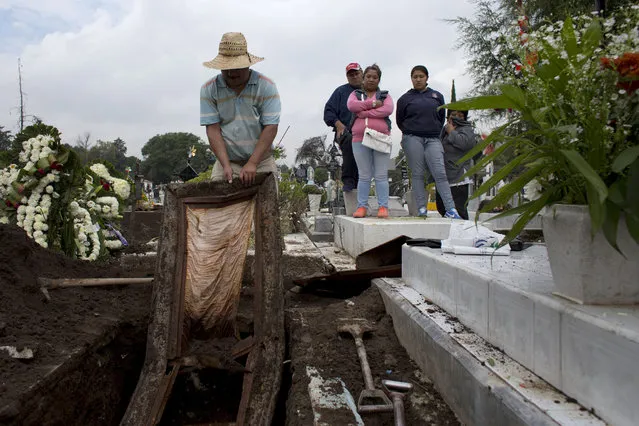
In this September 17, 2014 photo, relatives watch as the body of a mother and sister is exhumed to free up space for a new burial, at a nearly-full San Isidro cemetery in northern Mexico City. The woman's body was to be reburied in her husband's grave in a different area. With cemeteries rapidly reaching capacity in one of the world's biggest cities, families are forced to exhume and remove their relative's remains after a period of several years. Remains unclaimed by relatives may be reburied as unmarked loose bones beneath the fresh grave, or piled with others on exposed altars. (Photo by Rebecca Blackwell/AP Photo)
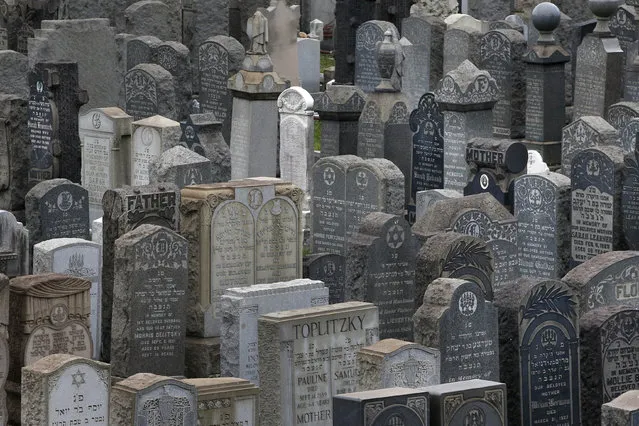
This October 13, 2014, photo shows headstones in Washington Cemetery in the Brooklyn borough of New York. The predominantly Jewish cemetery dates back to the late 1800's and is almost filled to capacity. (Photo by Kathy Willens/AP Photo)
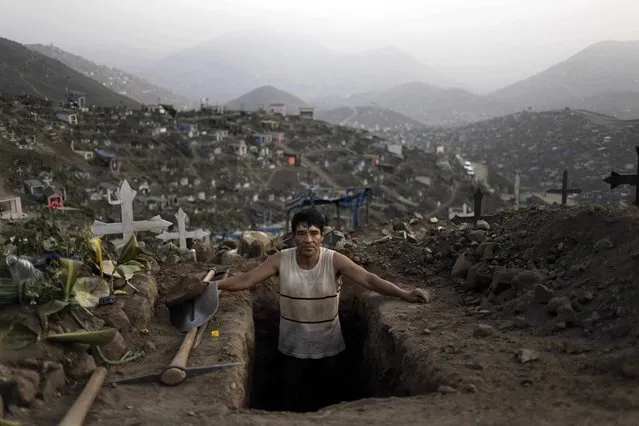
In this September 9, 2013 file photo, grave digger Juan Luis Cabrera takes a break from his work at the “Nueva Esperanza” cemetery in Lima, Peru. (Photo by Rodrigo Abd/AP Photo)
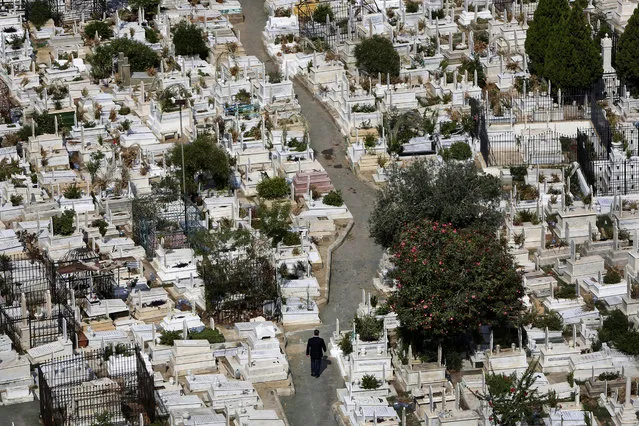
In this October 14, 2014, photo, a Lebanese man, center, walks between graves at the overcrowded Bashoura cemetery for Muslim Sunnis in Beirut, Lebanon. The congested city of more than one million is cramped with cemeteries wedged into residential areas, increasingly forcing families to bury several members of the same family in one grave. Available land plots are extremely scarce and what is left is being used by developers to build luxury officers towers and apartments. (Photo by Hussein Malla/AP Photo)
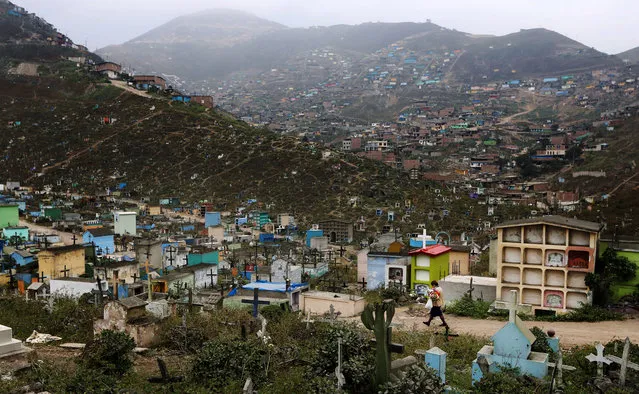
In this October 15, 2014 photo, a woman carries flowers through the Nueva Esperanza cemetery in the Villa Maria shantytown in Lima, Peru. The reality of relying on finite land resources to cope with the endless stream of the dying has brought about creative solutions. (Photo by Martin Mejia/AP Photo)
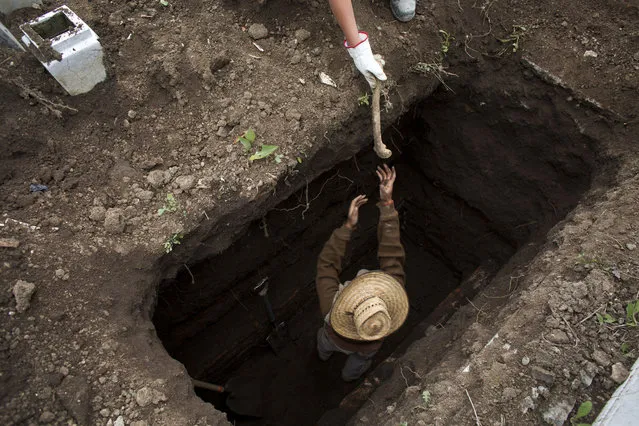
In this October 14, 2014 photo, gravediggers remove unmarked loose bones from the bottom of a grave as they prepare it for a fresh burial, after removing more recent remains from a coffin for delivery to the family in Mexico City. With cemeteries rapidly reaching capacity in one of the world's biggest cities, families are forced to exhume and remove their relative's remains after a period of several years. (Photo by Rebecca Blackwell/AP Photo)
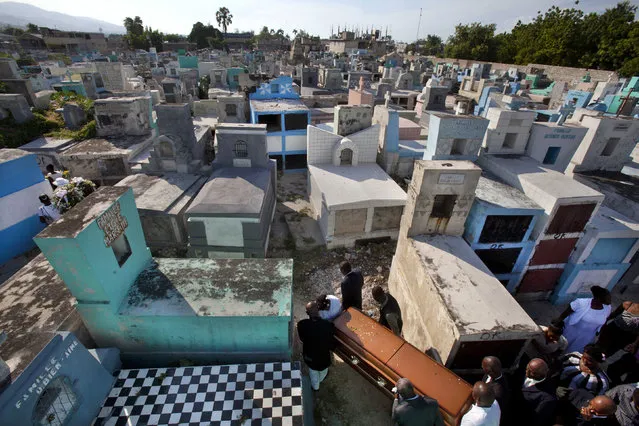
In this October 9, 2014 photo, relatives carry a coffin through the National Cemetery in Port-au-Prince, Haiti. Cemetery overcrowding is an issue that resonates around the world, particularly in its most cramped cities and among religions that forbid or discourage cremation. (Photo by Dieu Nalio Chery/AP Photo)
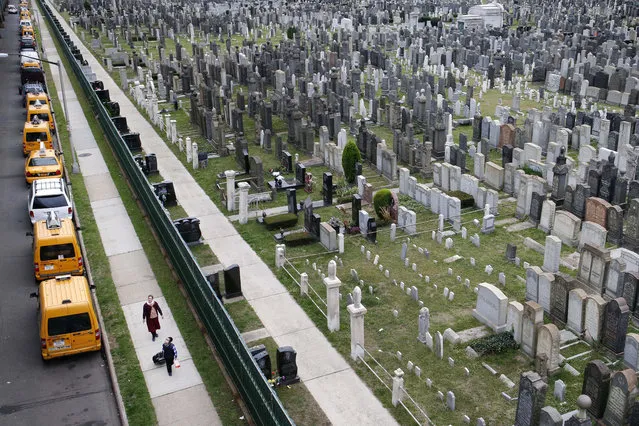
In this October 13, 2014 photo, two people walk past Washington Cemetery in the Brooklyn borough of New York. The predominantly Jewish cemetery dates back to the late 1800's and is almost filled to capacity. (Photo by Kathy Willens/AP Photo)
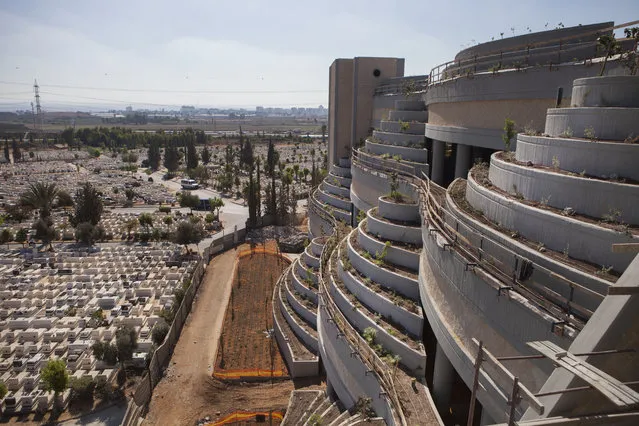
This October 6, 2014, photo shows a new vertical part of the Yarkon cemetery outside of the city of Petah Tikva, Israel. With real estate at a premium, Israel is at the forefront of a global movement building vertical cemeteries in densely populated countries. The reality of relying on finite land resources to cope with the endless stream of the dying has brought about creative solutions. (Photo by Dan Balilty/AP Photo)
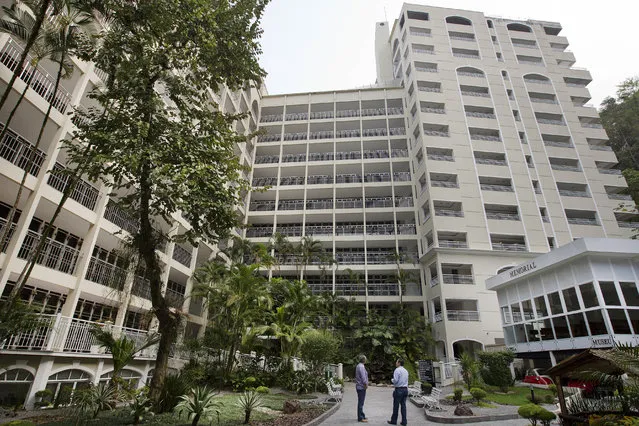
In this October 13, 2014 photo, the Necropole Ecumenica Memorial stands tall in Santos, Brazil. When completed, the five building memorial known as a vertical cemetery will hold 180,000 bodies. The reality of relying on finite land resources to cope with the endless stream of the dying has brought about creative solutions. (Photo by Andre Penner/AP Photo)
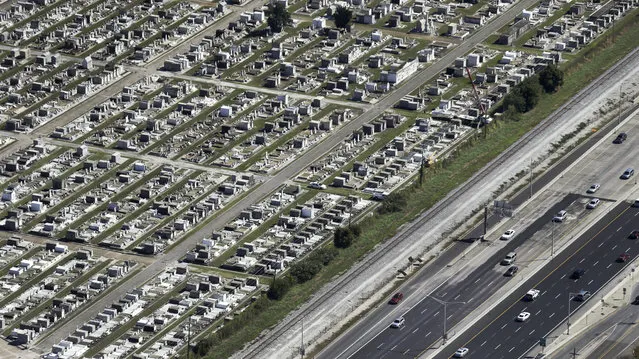
In this October 15, 2014 aerial photo, cars drive past cemeteries in New Orleans. Due to the high water table of New Orleans, which is just below sea level, water fills a grave as soon as it is dug. Historically, most graves in New Orleans are above ground if they are not concrete reinforced, lest the bodies are pushed to the surface by the water. (Photo by Gerald Herbert/AP Photo)
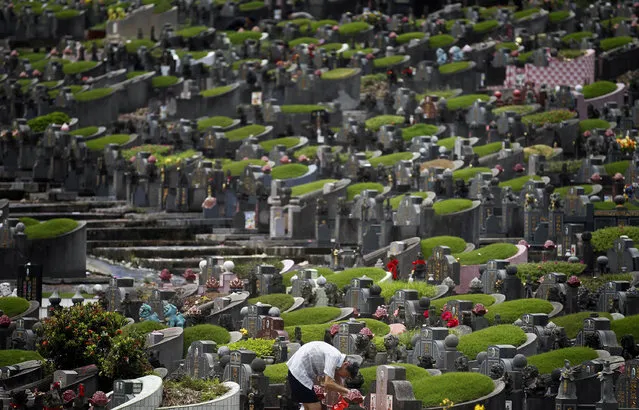
In this April 4, 2012, file photo, an elderly man bends over a tomb at a Chinese cemetery during Qingming Festival in Singapore. (Photo by Wong Maye-E/AP Photo)
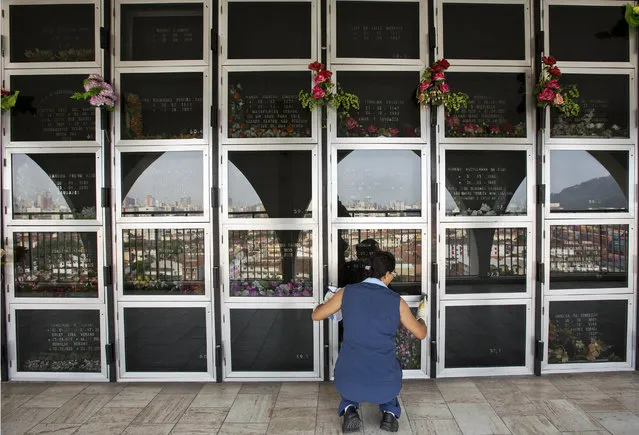
In this October 13, 2014 photo, an employee at the Necropole Ecumenica Memorial cleans the surface of crypts in Santos, Brazil. When completed, the five building memorial known as a vertical cemetery will hold 180,000 bodies. (Photo by Andre Penner/AP Photo)
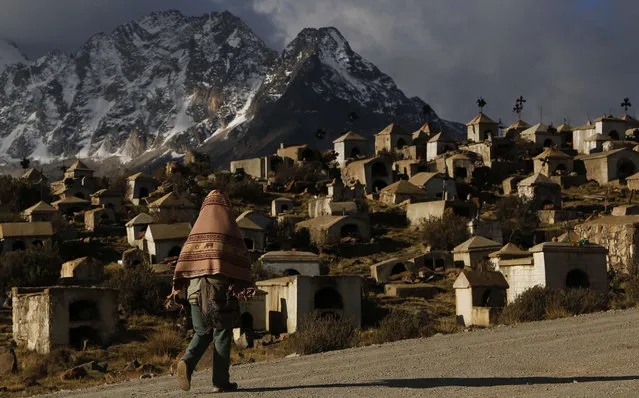
In this October 14, 2014, photo, a woman walks by the Milluni cemetery at the base of the Huayna Potosi Mountain on the outskirts of El Alto, Bolivia. The cemetery was built in 1965 to bury dozens of miners who were killed, allegedly by soldiers, during the military dictatorship of President Rene Barrientos. Today, the cemetery is used to bury the family members of those miners. (Photo by Juan Karita/AP Photo)
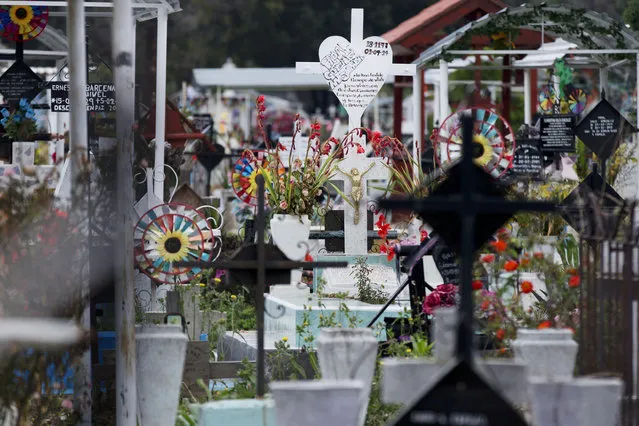
In this October 14, 2014 photo, graves decorated with flowers and signposts stand tightly packed together at the nearly-full San Isidro cemetery in northern Mexico City. With cemeteries rapidly reaching capacity in one of the world's biggest cities, families are forced to exhume and remove their relative's remains after a period of several years. (Photo by Rebecca Blackwell/AP Photo)
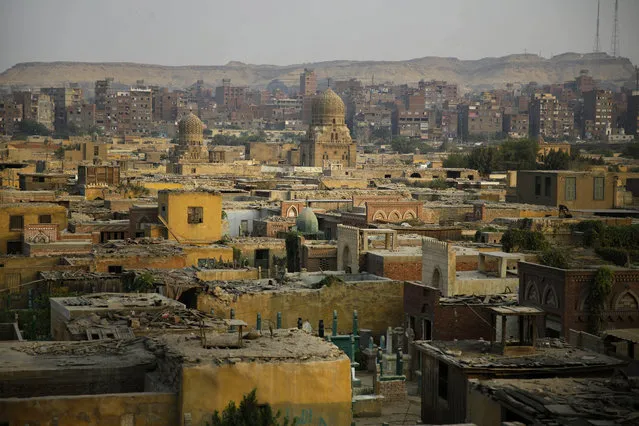
This October 10, 2014, photo shows a general view of cemeteries located in the City of the Dead, a slum where half a million people live among tombs, in Cairo. The reality of relying on finite land resources to cope with the endless stream of the dying has brought about creative solutions. (Photo by Hassan Ammar/AP Photo)

In this August 13, 2014, file photo, children pray for their ancestors after sweeping their family tombstones at a cemetery in Haiki, Nagasaki Prefecture, southern Japan as they celebrate the Bon Festival. (Photo by Eugene Hoshiko/AP Photo)
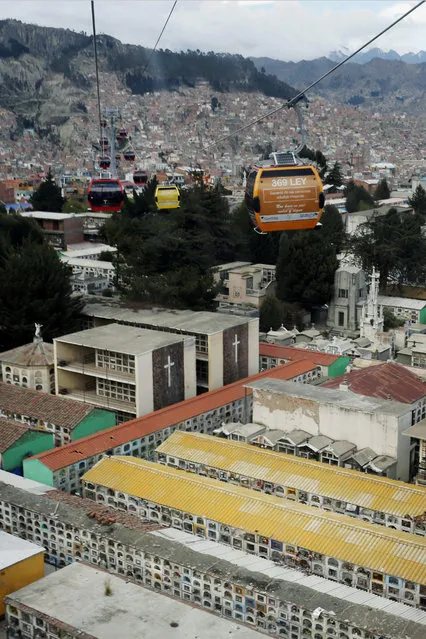
In this October 9, 2014 photo, people use cable cars to commute over buildings containing crypts at a cemetery, in La Paz, Bolivia. Cemetery overcrowding is an issue that resonates around the world, particularly in its most cramped cities and among religions that forbid or discourage cremation. (Photo by Enric Marti/AP Photo)
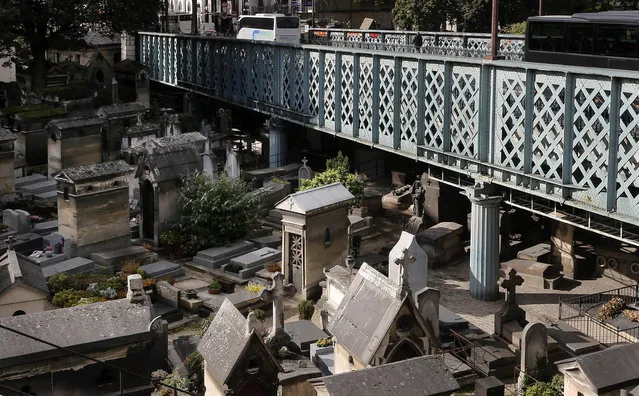
In this October 13, 2014 photo, buses drive on a motorway over the Montmartre cemetery in Paris. Cemetery overcrowding is an issue that resonates around the world, particularly in its most cramped cities and among religions that forbid or discourage cremation. The reality of relying on finite land resources to cope with the endless stream of the dying has brought about creative solutions. (Photo by Jacques Brinon/AP Photo)
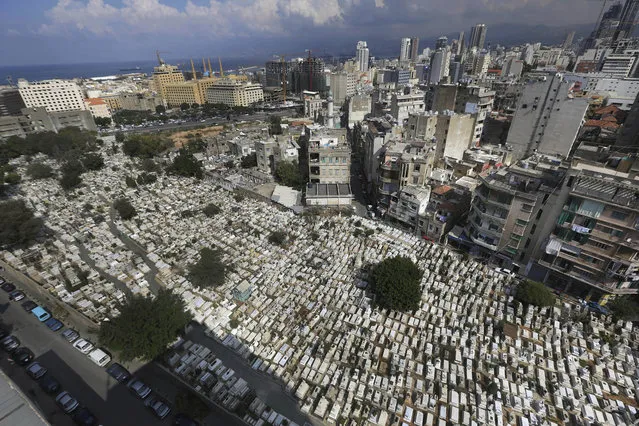
This October 14, 2014, photo shows hundreds of graves at the overcrowded Bashoura cemetery for Muslim Sunnis in Beirut, Lebanon. The congested city of more than one million is cramped with cemeteries wedged into residential areas, increasingly forcing families to bury several members of the same family in one grave. Available land plots are extremely scarce and what is left is being used by developers to build luxury office towers and apartments. (Photo by Hussein Malla/AP Photo)
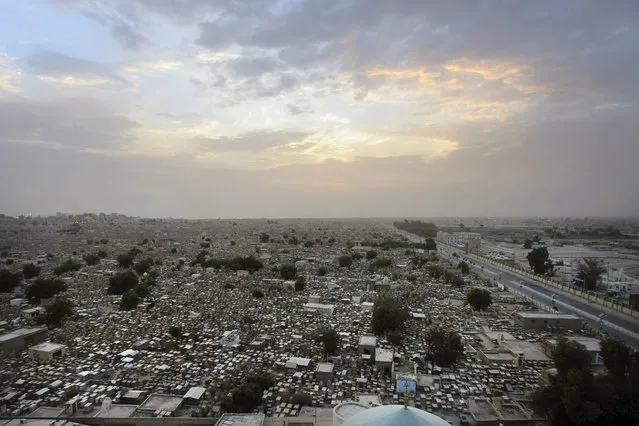
This October 11, 2014, photo shows the Wadi al-Salam, or “Valley of Peace” cemetery in the Shiite holy city of Najaf, 100 miles (160 kilometers) south of Baghdad, Iraq. (Photo by Jaber al-Helo/AP Photo)
17 Oct 2014 12:16:00,
post received
0 comments
